Our History

St John Ambulance has a remarkable history.
From humble beginnings teaching first aid in England through to taking on the responsibility of WA's ambulance service - it has grown to become a sophisticated and complex organisation.
-

The need for first aid training
The St John Ambulance Association was established during 1877 in England by the Order of St John. The aim of the Association was to address the growing need for effective first aid training to deal with the increase in accidents occurring with the development of an industrialised and urbanised society.
-

Enter the Brigade
Inspired by the original monastic Order of St John, the English Order founded a St John hospital in Jerusalem and, during 1887, created the St John Ambulance Brigade. The Brigade was based on a military-style organisation, featuring uniformed disciplined members and a specific hierarchy. Its primary purpose was to provide volunteers, trained in first aid, to offer basic medical assistance at large public events and during times of emergency.
-

Arrival in Western Australia
Permission was given to Mathieson Henry Jacoby to establish a St John Ambulance Association centre in the Western Australian colony during 1891. Jacoby had already gained a St John First Aid certificate in his hometown of Adelaide. Along with Dr George McWilliams he enlisted several local doctors to promote and teach first aid in Perth. The initial first aid training class commenced on 3 March, 1892 and was attended by 20 police, 10 railway workers and two members of the community. By the end of the century, 176 students had passed St John Ambulance first aid courses.
-
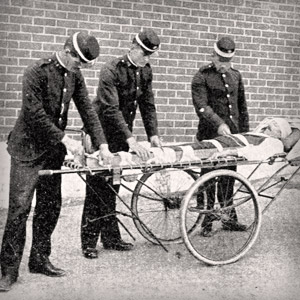
Expansion into country WA
The start of the century saw new centres established in Kalgoorlie, Boulder and Fremantle. This was the beginning of a steady expansion into regional Western Australia. A men’s division of the St John Ambulance Brigade was formed during 1904. The Brigade attended all race meetings at the metropolitan race courses and received donations for their services. They also attended other events such as football matches, bicycle races and the Royal Agricultural Show. During this decade, 1506 students passed their first aid courses.
-

Supporting the war effort
During 1911, first aid classes began at mine sites and two years later, classes became a regular part of instruction in schools. The first women’s nursing division was also founded during 1913. Many of these volunteers, along with the men’s Brigade, served in the First World War. This included women who formed Voluntary Aid Detachments and worked in military hospitals. Despite first aid class numbers fluctuating during this decade – increasing during the First World War and decreasing because of the influenza pandemic – 7126 students passed their first aid courses.
-

The city’s Ambulance Service
During 1921, a building was acquired on Murray street to officially house the Perth centre of the Association. After negotiations with other ambulance providers, St John Ambulance assumed responsibility for the city’s ambulance service on 1 July, 1922. Prior to this, the injured were transported to hospitals by a number of ambulance corps including the Fire Brigade, Police, Railways, and the Fremantle Port Authority. Overwhelmed by public demand, the logical decision was to involve St John Ambulance.
See more here. -

Lotteries Commission support activities
The Depression following the First World War slowed advancement of the centres around the State. A campaign was initiated during 1932 to encourage first aid teaching to senior high school students in country areas. The ambulance service was funded through donations, and during 1933 the Lotteries Commission made its first annual grant, establishing a long association with St John Ambulance.
See more here. -
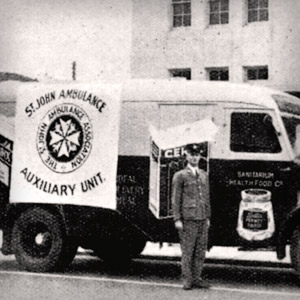
Demand for training increases
World War II had a great impact on all branches of St John Ambulance, with unprecedented demand for first aid training. Large numbers of the population – especially women – joined first aid classes for the war effort. The number of certificates issued between 1939 and 1945 was 41,962. This was equivalent to one in every 12 Western Australians being certified.
See more here. -

First aid revolutionised
First aid was transformed this decade with the introduction of mouth-to-mouth resuscitation. A contributory scheme was introduced during 1952 to allow the public to insure themselves for their ambulance transport needs. By 1959 there were 72 sub centres established throughout the State. The Association taught 1871 first aid students during that year and transported almost 12,000 patients. By the end of the decade, 28,499 students had passed a first aid course.
-

A State of growth
This decade saw significant growth in St John Ambulance activity as the State’s population rapidly grew. Major changes in funding and governance enabled the Association to keep up with the increased demands. At an international level, the ‘Resusci Anne’ first aid training manikin was introduced by Norwegian toy and doll manufacturer Asmund Laerdal. The introduction of Resusci Anne would revolutionise the training of first aid and CPR for generations to come.
See more here. -
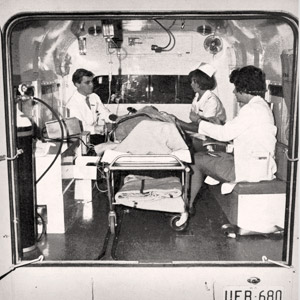
Birth of a non-profit organisation
Population growth and developments throughout the State continued during the 1970s. During 1979, the administration of St John Ambulance shifted to a higher quality of professional management, and the headquarters moved from Perth to Belmont. As a consequence of these changes, the Association ceased being a medical charity and became a non-profit organisation combining features of a public utility, a business corporation and a voluntary association.
See more here. -

A cohesive entity
Across Australia, St John Ambulance services and activities were streamlined during the 1980s. A major structural review was initiated during 1985. All the various State arrangements were brought together under one cohesive entity; improving communications and reducing duplication. From this, a single name and logo was adopted across the country. The new name was ‘St John Ambulance Australia’ and all activities were channelled into two departments – a training branch replacing the ‘Association’ and an Operations Branch replacing the ‘Brigade’.
See more here. -
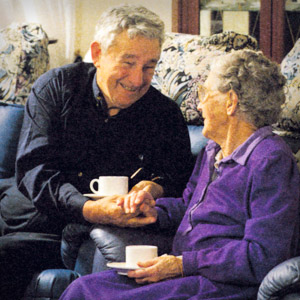
A century of service
St John Ambulance Australia (WA) celebrated 100 years of service to the Western Australian community during 1992, as well as 70 years of running the ambulance service. The organisation continued to develop and during 1995 it opened a new branch, Community Care. The aim was to meet the growing needs of the lonely elderly in the community, with non-uniformed volunteers taking them shopping or on excursions and maintaining contact by telephone.
See more here. -
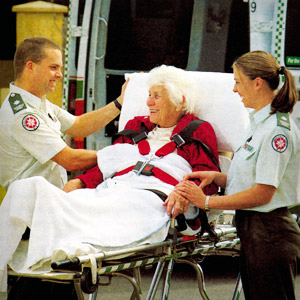
A modern organisation
The new millennium saw a united, modern organisation emerge. St John Ambulance was officially recognised by the State Government as the principle provider of ambulance transport in Western Australia. The Volunteer First Aid Service celebrated 100 years during 2004, acknowledging the important role volunteers play in providing first aid services at community, cultural and sporting events.
See more here. -

What the future holds
St John Ambulance Western Australia celebrates 120 years of service to the community in 2012. It is committed to pursuing its humanitarian vision and providing high-quality first aid services to the community, using new technology and advancements in first aid equipment and techniques.
Since the start of the new millennium, 1,115,247 students have passed St John Ambulance first aid training courses.
-

The digital era
St John WA has embraced the digital world by using innovative technologies to provide new and exciting services to the community. From our Virtual Reality First Aid Training, which takes the user into an immersive and challenging environment, where they are tested in real life scenarios. To our First Responder app with over 250,000 downloads, allowing certified members to assist in an emergency, where every minute counts.
Throughout the last 10 years St John has continued to support the community through devastating fires and COVID-19. Looking forward we aim to be the most trusted provider of clinical care in the community of Western Australia.

